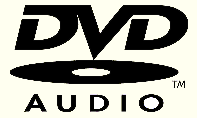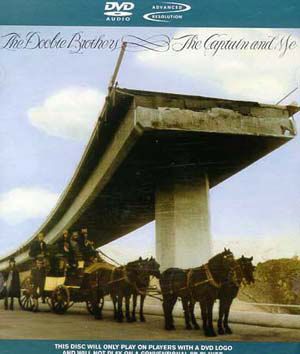A Prima Donna on PC: Creative Labs Audigy 2
DVD Audio

Audio and video supports have evolved over the years. The audio world has settled for the CD, an accurate, highly practical and economical support, while video is changing directly from the VHS cassette to DVD. But the music industry and the DVD Forum prefers a uniform format, so they are now thinking they will sell us our favorite albums on DVD, and this is why the DVD Audio has come into being. A bit of technical information: DVD has the edge over the CD in its storage capacity. A CD can hold 80 minutes of music at most in a single format, whereas a DVD can hold ten times as much and supports all sorts of sound formats. In terms of data, an ordinary DVD has a capacity of 4.7 GB, but a double-layer DVD has 8.5 GB! A CD holds no more than 700 MB. The problem for DVD developers is whether this huge space will be used to increase the amount of music or its quality. The answer is a combination of the two since the innovative thing about DVD Audio is that its quality is improved because its output is higher.

On a CD, music is stored digitally in PCM format, and the format is invariable. The sound is encoded in 16 bits with a sampling rate of 44.1 kHz. The technology used for a DVD Audio is MLP (Meridian Lossless Packing), and data can be varied to raise quality or lower it if necessary. With higher encoding and sampling rates, the quality of the sound and its restoration are substantially better. Now on a DVD Audio, the sample size can be lowered by 12 bits or raised by up to 24 bits. The same goes for the sampling rate, which can be taken to 192 kHz in stereo or 96 kHz in multi-channel mode. Unlike a CD, a DVD Audio can contain music encoded in Dolby Digital and DTS. Most DVD Audio encoding will be in Dolby Digital, or in DTS, this being one of the main assets of DVD Audio, apart from the gain in sound quality.

Sony and Philips have also developed a format that can be described as halfway between CD and DVD Audio: this is called SACD, for Super Audio CD. While standard CDs encode in PCM (Pulse Code Modulation), SACD uses a new kind of encoding system called Direct Stream Digital (DSD). This system keeps filter adding down, and is less harmful to sound quality than PCM. Moreover, the sampling rate is much higher and can reach 2,822,400 samples per second. The catalogue of disks available is fairly extensive, but SACD means you have to have the player that goes with it, so that pushes prices up quite a lot. The last point to note is that, like DVD Audio, SACD can also be encoded on six channels to play a track in 5.1.
Stay On the Cutting Edge: Get the Tom's Hardware Newsletter
Get Tom's Hardware's best news and in-depth reviews, straight to your inbox.
Current page: DVD Audio
Prev Page Audigy 2: Input/ Output Quality, Continued Next Page DVD Audio, Continued
Top-end and mid-range RTX 50-series cards are rumored to launch in early 2025, and entry-level cards to follow later — RTX 5090, 5080, 5070 Ti and 5070 up first

US FCC to update undersea cable regulations amid suspected cable sabotage incidents — proposals include restricting Chinese companies from building cable components

Pre-orders for systems with Nvidia RTX 5090 GPUs begin — liquid-cooled workstations on offer from Comino